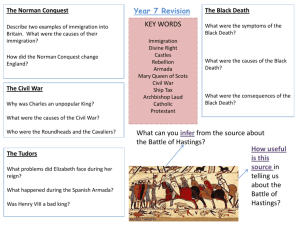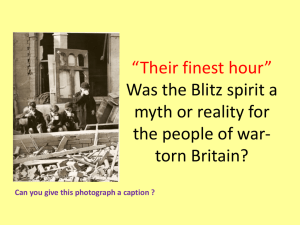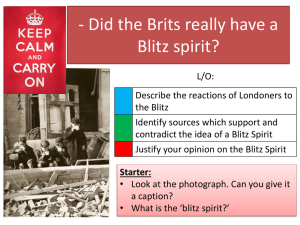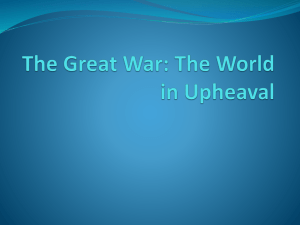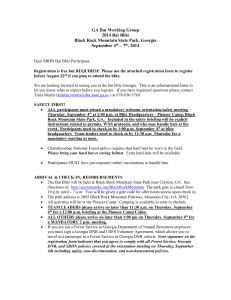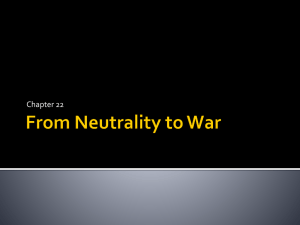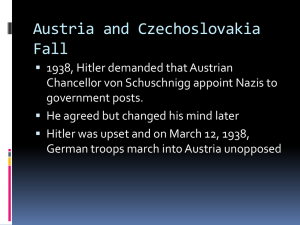WORLD WAR II - What was it like in the Blitz?
advertisement
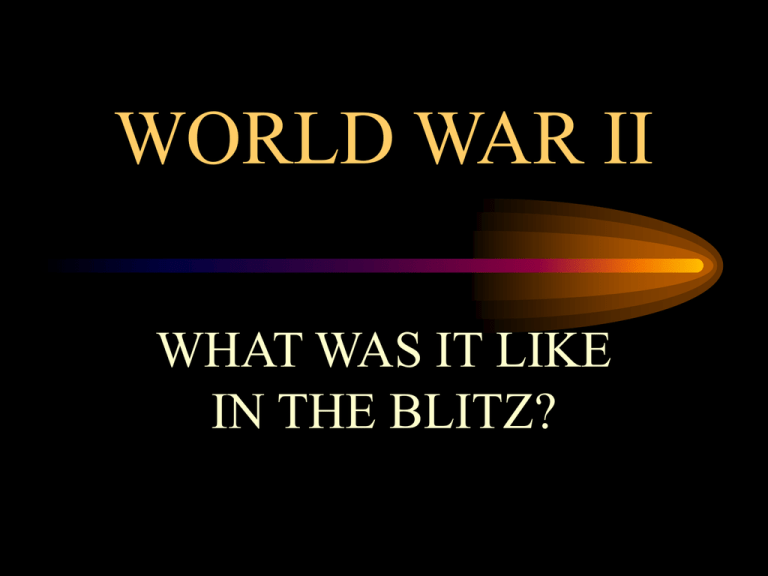
WORLD WAR II WHAT WAS IT LIKE IN THE BLITZ? THE BLITZ: FACTFILE • The Blitz began on 7 September 1940. • It started when Hitler changed his tactics during the Battle of Britain and ordered the Luftwaffe to start bombing London rather than military targets such as airforce bases, runways and radar installations. The Blitz had begun • German bombing of London lasted for 57 nights in a row after September 7 1940. • The Germans dropped on average 2000 - 3000 tonnes of bombs per raid. • 3,500,000 homes were damaged or destroyed. • 16 May 1941 was the last heavy German raid, although bombing went on throughout the war. How did people in Britain prepare for German air-raids in 1939? • In 1939 the British people and government expected the German airforce to bomb Britain immediately. This did not happen. • Cinemas were closed and other public entertainments like football matches were stopped. • 1 million coffins were produced to handle the number of casualties. • People assembled Anderson and Morrison shelters in their homes and gardens. How did people defend themselves during the Blitz? • Air-raid sirens warned people of oncoming raids. Radar gave air intelligence warning of oncoming raids. Air Raid Precaution Wardens (ARPs) often tried to spot oncoming planes • People began to use their Anderson and Morrison Shelters. In London, many people used the London Underground stations. • Barrage balloons, searchlights and guns as well as our fighters were used to stop the German bombers. • The government ordered a blackout. No street lights, no shop lights, thick curtains at every window, covered traffic lights and no lighting cigarettes in the streets. • People placed strips of tape across their windows to protect themselves from flying glass. • The government issued gas masks to all members of the public including babies • Children were evacuated from London again What were the aims of the Luftwaffe? • The German airforce had two main aims in their bombing. • They wanted to lower the morale of people in Britain and make them believe that they could not carry on the war. • They wanted to make fighting the war as difficult as possible for Britain by destroying targets that helped Britain’s war effort. • The German airforce was therefore determined to destroy as much of London as possible. In particular the London docks were a major target. • The House of Commons was bombed during the Blitz. How much destruction was caused? • Approximately 40,000 civilians were killed in London between September 1940 and May 1941 • About 3,500,000 houses were destroyed in the Blitz, including over 1 million in London. • Many families were made homeless. • Many people became part-time firemen by joining the Auxiliary Fire Service (AFS). The ARP and AFS both helped with rescue squads and the ambulance service. • Roads were cratered, telephone systems were crippled, gas mains were fractured, electricity supplies were destroyed. • Hospitals all over London were damaged, some severely. • A Blitz spirit was said to have developed. People tried to carry on as normal. HOW SHOULD WE REMEMBER THE BLITZ TODAY, 60 YEARS LATER?

